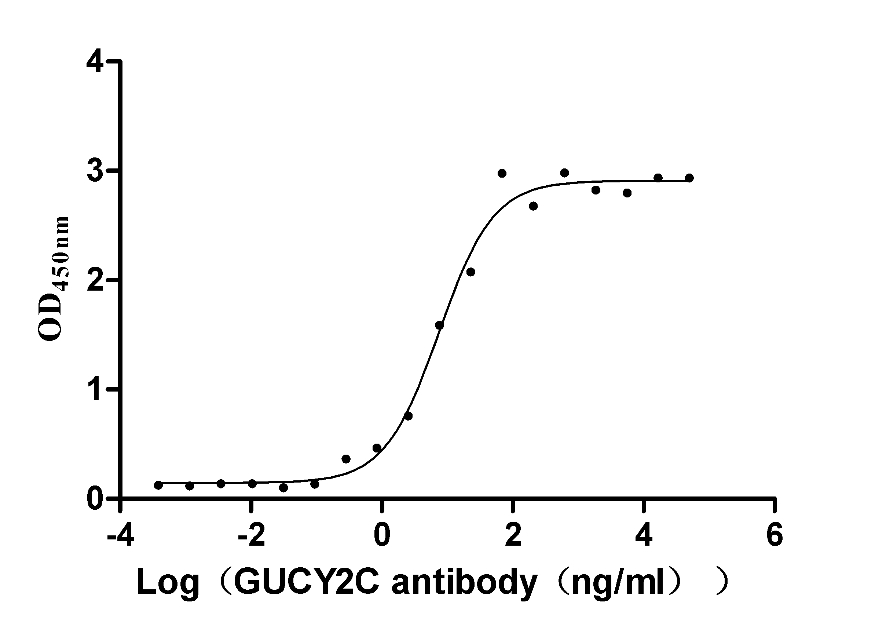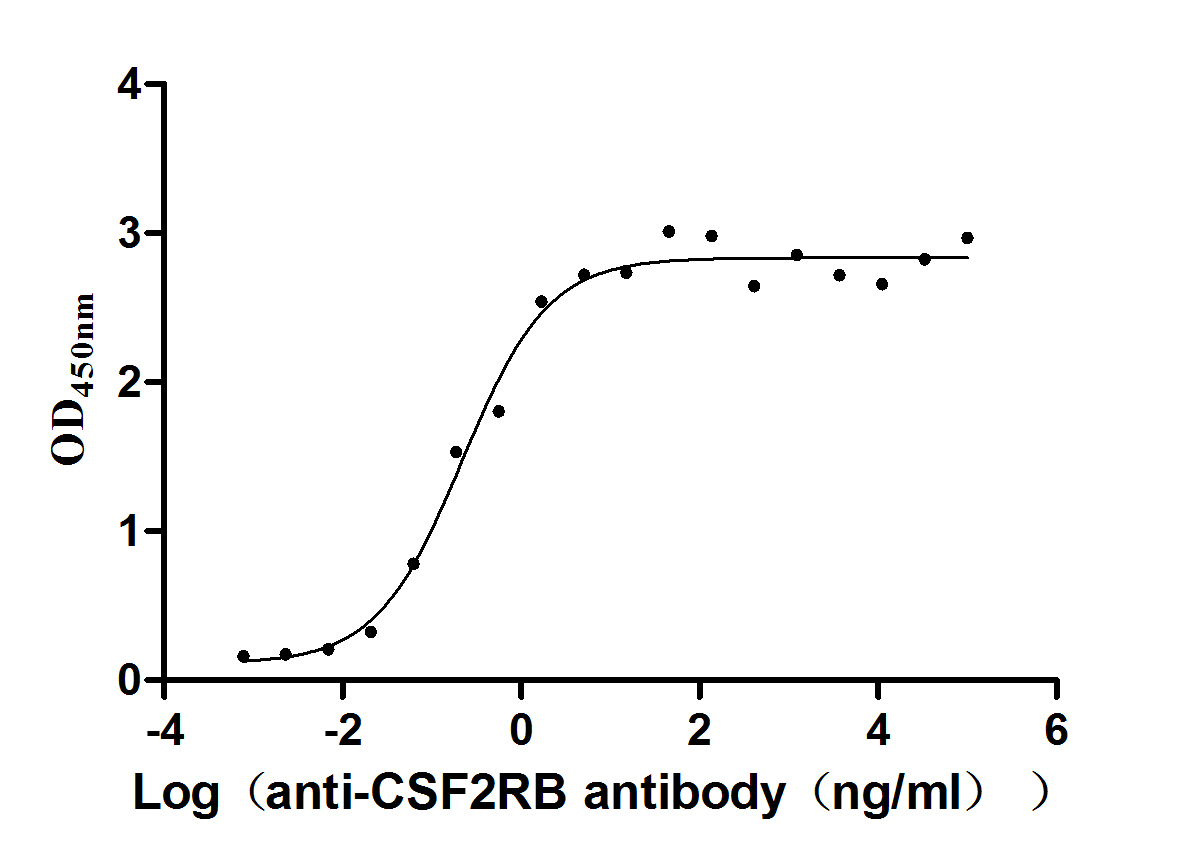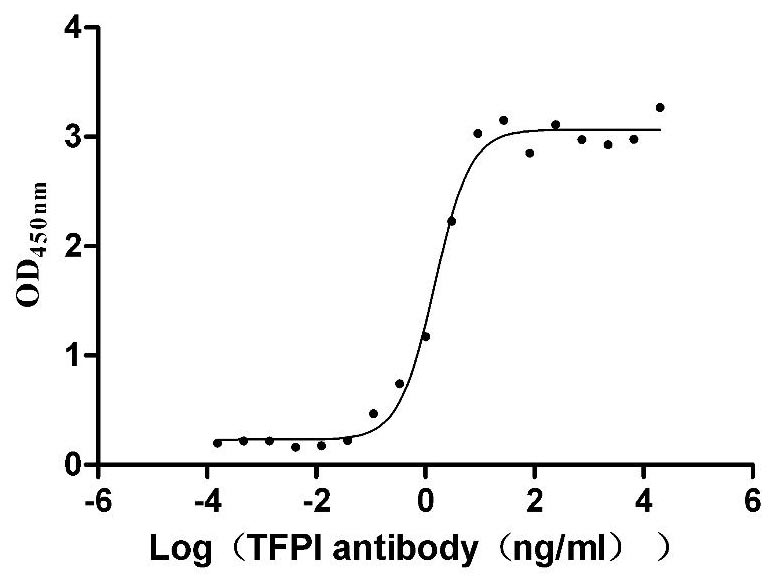Recombinant Human Low density lipoprotein receptor adapter protein 1 (LDLRAP1)
-
货号:CSB-YP729190HU
-
规格:
-
来源:Yeast
-
其他:
-
货号:CSB-EP729190HU
-
规格:
-
来源:E.coli
-
其他:
-
货号:CSB-EP729190HU-B
-
规格:
-
来源:E.coli
-
共轭:Avi-tag Biotinylated
E. coli biotin ligase (BirA) is highly specific in covalently attaching biotin to the 15 amino acid AviTag peptide. This recombinant protein was biotinylated in vivo by AviTag-BirA technology, which method is BriA catalyzes amide linkage between the biotin and the specific lysine of the AviTag.
-
其他:
-
货号:CSB-BP729190HU
-
规格:
-
来源:Baculovirus
-
其他:
-
货号:CSB-MP729190HU
-
规格:
-
来源:Mammalian cell
-
其他:
产品详情
-
纯度:>85% (SDS-PAGE)
-
基因名:
-
Uniprot No.:
-
别名:ARH ; ARH GENE; ARH_HUMAN; ARH1; ARH2; Autosomal recessive hypercholesterolemia protein; DKFZp586D0624; FHCB1; FHCB2; LDL receptor adaptor protein; Ldlrap1; Low density lipoprotein receptor adapter protein 1; MGC34705; OTTHUMP00000008526
-
种属:Homo sapiens (Human)
-
蛋白长度:full length protein
-
表达区域:1-308
-
氨基酸序列MDALKSAGRA LIRSPSLAKQ SWGGGGRHRK LPENWTDTRE TLLEGMLFSL KYLGMTLVEQ PKGEELSAAA IKRIVATAKA SGKKLQKVTL KVSPRGIILT DNLTNQLIEN VSIYRISYCT ADKMHDKVFA YIAQSQHNQS LECHAFLCTK RKMAQAVTLT VAQAFKVAFE FWQVSKEEKE KRDKASQEGG DVLGARQDCT PSLKSLVATG NLLDLEETAK APLSTVSANT TNMDEVPRPQ ALSGSSVVWE LDDGLDEAFS RLAQSRTNPQ VLDTGLTAQD MHYAQCLSPV DWDKPDSSGT EQDDLFSF
-
蛋白标签:Tag type will be determined during the manufacturing process.
The tag type will be determined during production process. If you have specified tag type, please tell us and we will develop the specified tag preferentially. -
产品提供形式:Lyophilized powder
Note: We will preferentially ship the format that we have in stock, however, if you have any special requirement for the format, please remark your requirement when placing the order, we will prepare according to your demand. -
复溶:We recommend that this vial be briefly centrifuged prior to opening to bring the contents to the bottom. Please reconstitute protein in deionized sterile water to a concentration of 0.1-1.0 mg/mL.We recommend to add 5-50% of glycerol (final concentration) and aliquot for long-term storage at -20℃/-80℃. Our default final concentration of glycerol is 50%. Customers could use it as reference.
-
储存条件:Store at -20°C/-80°C upon receipt, aliquoting is necessary for mutiple use. Avoid repeated freeze-thaw cycles.
-
保质期:The shelf life is related to many factors, storage state, buffer ingredients, storage temperature and the stability of the protein itself.
Generally, the shelf life of liquid form is 6 months at -20°C/-80°C. The shelf life of lyophilized form is 12 months at -20°C/-80°C. -
货期:Delivery time may differ from different purchasing way or location, please kindly consult your local distributors for specific delivery time.Note: All of our proteins are default shipped with normal blue ice packs, if you request to ship with dry ice, please communicate with us in advance and extra fees will be charged.
-
注意事项:Repeated freezing and thawing is not recommended. Store working aliquots at 4°C for up to one week.
-
Datasheet :Please contact us to get it.
相关产品
靶点详情
-
功能:Adapter protein (clathrin-associated sorting protein (CLASP)) required for efficient endocytosis of the LDL receptor (LDLR) in polarized cells such as hepatocytes and lymphocytes, but not in non-polarized cells (fibroblasts). May be required for LDL binding and internalization but not for receptor clustering in coated pits. May facilitate the endocytocis of LDLR and LDLR-LDL complexes from coated pits by stabilizing the interaction between the receptor and the structural components of the pits. May also be involved in the internalization of other LDLR family members. Binds to phosphoinositides, which regulate clathrin bud assembly at the cell surface. Required for trafficking of LRP2 to the endocytic recycling compartment which is necessary for LRP2 proteolysis, releasing a tail fragment which translocates to the nucleus and mediates transcriptional repression.
-
基因功能参考文献:
- LDLRAP1 associated with Familial Hypercholesterolemia and Polygenic Hypercholesterolemia in patients with Acute Coronary Syndrome , age /=160 mg/dl. PMID: 28958330
- Numb specifically regulates NPC1L1-mediated cholesterol absorption both in human intestine and liver, distinct from ARH and Dab2, which selectively participate in LDLR-mediated LDL uptake. PMID: 25331956
- Identification of ARH gene and characterization of its mutations in Autosomal Recessive Hypercholesterolemia patients [Review] PMID: 25225128
- cells that depend upon ARH for LDL uptake can control which lipoproteins are internalized by their LDLRs through changes in nitric oxide. PMID: 23564733
- This work identified a combined LDL receptor and LDLRAP1 mutation as the cause for severe familial hypercholesterolemia in a family of Turkish descent. PMID: 23510778
- The report provides evidence that endocytosis of the ROMK potassium channel is controlled by LDLRAP1 (ARH). ROMK binds directly to the LDLRAP1, and this interaction is mediated by a novel variant of the canonical "NPXY" endocytotic signal, YxNPxFV. LDLRAP1-knockout mice are unable to physiologically regulate ROMK. PMID: 19841541
- report the crystal structure at 1.37-A resolution of the phosphotyrosine-binding (PTB) domain of ARH in complex with an LDLR tail peptide containing the FxNPxY(0) internalization signal PMID: 22509010
- LDL receptor/LDLRAP1 double heterozygous mutations may account for severer phenotype in terms of xanthoma and atherosclerotic cardiovascular disease in familial hypercholesterolemia patients. PMID: 21872251
- ARH protein is involved in cell cycle progression, possibly by affecting nuclear membrane formation through interaction with lamin B1 or other mitotic proteins, and its absence affects cell proliferation and induces premature senescence. PMID: 21778424
- Knockdown of ARH in polarized epithelial cells leads to specific apical missorting of truncated LDLR, which encodes only the FxNPxY motif (LDLR-CT27). PMID: 21444685
- newly identified a rare Thr56Met missense mutation located in the phosphotyrosine-binding domain of ARH; among 1,800 Japanese individuals, only 4 were heterozygous for Thr56Met and all had hypercholesterolemia resembling familiar hypercholesterolemia PMID: 20124734
- Report prevalence and clinical features of heterozygous carriers of autosomal recessive hypercholesterolemia in Sardinia. PMID: 19477448
- ARH functions as an adaptor protein that couples LDLR to the endocytic machinery PMID: 12221107
- The autosomal recessive hypercholesterolemia (ARH) protein interfaces directly with the clathrin-coat machinery. In ARH patients, defective sorting adaptor function in hepatocytes leads to faulty LDL receptor traffic and hypercholesterolemia. PMID: 12451172
- restoration of LDL receptor function in cells from patients with autosomal recessive hypercholesterolemia by retroviral expression PMID: 12464675
- Single nucleotide polymorphism discovered among normal subjects at position 604 (cytosine to thymine: ARH-604C to ARH-604T), which changes proline residue at 202 to serine. ARH caused by mutation of cytosine to adenine at this same position. PMID: 12788851
- ARH facilitates endocytosis of megalin, escorts megalin along its endocytic route PMID: 14528014
- findings indicate that low density lipoprotein (LDL) receptor adaptor protein(ARH) is required not only for internalization of the LDL.LDL Receptor complex but also for efficient binding of LDL to the receptor PMID: 15166224
- Splice site mutant lacks 26 amino acids, resulting in the loss of beta-strands beta6 and beta7 from the PTB domain. PMID: 15599766
- ARH protein has an AP-2 beta2 appendage-binding sequence PMID: 15728179
- ARH is an endocytic sorting adaptor that actively participates in the internalization of the LDL-LDLR complex, possibly enhancing the efficiency of its packaging into the endocytic vesicles PMID: 16129683
- Dab2 expression is exceptionally low in hepatocytes, likely accounting for the pathological hypercholesterolemia that accompanies ARH loss. PMID: 16870701
- ARH might accelerate later steps in LDLR endocytosis in cooperation with AP-2. PMID: 16984970
- Large deletion in the ARH gene is associated with autosomal recessive hypercholesterolemia PMID: 17686643
- the endocytic adaptor protein ARH associates with motor and centrosomal proteins and is involved in centrosome assembly and cytokinesis PMID: 18417616
- PCSK9-mediated LDLR degradation is not entirely dependent on ARH function PMID: 19081568
显示更多
收起更多
-
相关疾病:Hypercholesterolemia, autosomal recessive (ARH)
-
亚细胞定位:Cytoplasm.
-
组织特异性:Expressed at high levels in the kidney, liver, and placenta, with lower levels detectable in brain, heart, muscle, colon, spleen, intestine, lung, and leukocytes.
-
数据库链接:
HGNC: 18640
OMIM: 603813
KEGG: hsa:26119
STRING: 9606.ENSP00000363458
UniGene: Hs.590911
Most popular with customers
-
Recombinant Human Heat-stable enterotoxin receptor (GUCY2C), partial (Active)
Express system: Mammalian cell
Species: Homo sapiens (Human)
-
Recombinant Human Cytokine receptor common subunit beta (CSF2RB), partial (Active)
Express system: Mammalian cell
Species: Homo sapiens (Human)
-
Recombinant Human Tissue factor pathway inhibitor (TFPI), partial (Active)
Express system: Mammalian cell
Species: Homo sapiens (Human)
-
Recombinant Human Zymogen granule protein 16 homolog B (ZG16B) (Active)
Express system: Mammalian cell
Species: Homo sapiens (Human)
-
Recombinant Macaca fascicularis Trophoblast glycoprotein (TPBG), partial (Active)
Express system: Mammalian cell
Species: Macaca fascicularis (Crab-eating macaque) (Cynomolgus monkey)
-
Recombinant Human Cadherin-17 (CDH17), partial (Active)
Express system: Mammalian cell
Species: Homo sapiens (Human)
-
Recombinant Macaca Gastric inhibitory polypeptide receptor(GIPR), partial (Active)
Express system: yeast
Species: Macaca fascicularis (Crab-eating macaque) (Cynomolgus monkey)



















